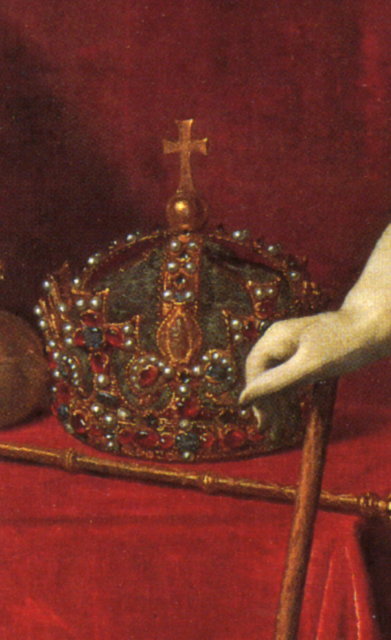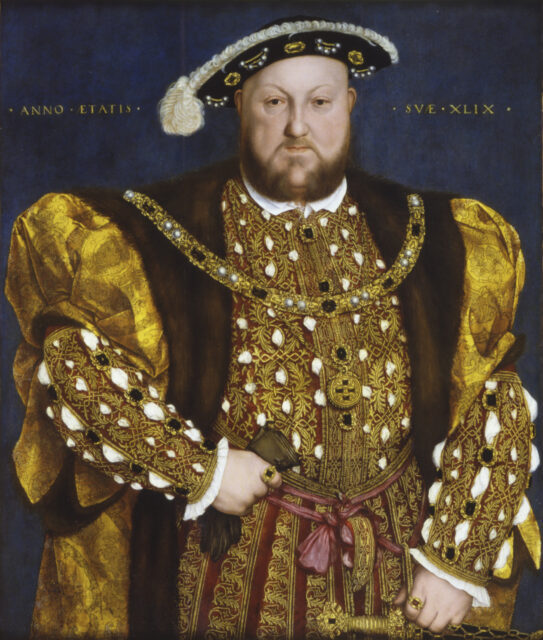Metal-detector enthusiasts are always hoping for a good find in the field: a bit of gold, silver, or some other item of value. One metal-detector enthusiast happened to make a career-defining discovery when he came across a small piece of history believed to have been lost forever.
Searching near a golf course

Metal-detecting enthusiast Kevin Duckett was exploring a bit of land at the back of the Market Harborough Golf Club in search of treasure in 2017. “It was a new permission and it was the first time I’d been up there. Being a new location I was on my own as I wanted to go along and do a test run,” he explained to The Harborough Mail.
As he scanned the area, his metal detector began to buzz off the charts.
Mysterious discovery

Going in for a closer investigation, Duckett believed at first that he had stumbled upon a piece of foil. However, as he dug, he noticed its shining gold color and realized this was no foil. “The rush of adrenaline and the buzz of excitement started to flow through my body,” he described to The Sun.
Buried in a hole just a few inches below the grassy surface, Duckett had unearthed a tiny statuette just 2.5 inches long. Given its weight, he knew it was made from solid gold. He had no idea just how much this tiny statuette would be worth.
It was clearly valuable
The figure of Henry VI from Henry VIII's 'Epiphany Crown' (so-called because he wore it in the Epiphany procession), lost after the Battle of Naseby and found in a field 2017. The crown originally bore figures of Henry VI, St Edmund and St Edward as the Three Kings pic.twitter.com/phi6rOjVFV
— Dr Francis Young (@DrFrancisYoung) January 6, 2023
Duckett knew he had a valuable piece of treasure on his hands, but he didn’t know where it came from, how old it was, or what its value could be. He began doing research on where the tiny gold item may have originated. “Over the course of more than three years I must have sent hundreds and hundreds of emails to academics, historians, researchers and experts all over the country trying to get to the bottom of this,” he said.
During his research, he stumbled upon a video from History Royal Palaces that showcased the replica of the Tudor crown they had created based on a painting of King Charles I. The crown was believed to have been adorned with 344 precious stones, and originally held three statuettes depicting Christ, along with St. George and the Virgin Mary with baby Jesus.
When Henry VIII became king, he had the Christ figures replaced with the three saints of England: St. Edmund, Edward the Confessor, and Henry VI. The statuette Duckett found is believed to be Henry VI as a saint.
Duckett had to see the replica crown for himself to be sure

Once he realized it was very likely that the tiny treasure he found could be a missing piece of the Tudor crown, Duckett made the journey to Hampton Court Palace, where the replica is on display. And when he saw the crown in its display case, he realized he was looking at the “figurine’s identical twin.”
The crown would have been used by Henry VIII for various ceremonial events held at Hampton Court. It was also employed during the coronations of all of Henry VIII’s children. However, the crown was believed to have been melted down at the Tower of London, the gold turned into coins and the jewels sold individually, after the fall of the British monarchy in 1649. Oliver Cromwell is said to have ordered it so.
How the statuette may have survived

The area where Duckett found the treasure, at the rear of the Market Harborough Golf Club, was where the bloody Battle of Naseby took place back in 1645. This battle between Charles I and Cromwell saw the former flee, and it’s possible he had the crown with him.
Experts believe the figurine could have become detached as Charles escaped, or that he buried it for safekeeping.
The piece could be worth millions

Made from 24-carat gold, the statuette is now being verified at the British Museum. A spokesperson there said, “As required by the Treasure process a British Museum expert has examined the piece and identified it as dating from the late Middle Ages.” The piece is worth an estimated $2.7 million.
More from us: An Amateur Metal Detectorist Unearthed a Gold Tudor Necklace Connected to Henry VIII
As for Duckett, he is still in awe of his discovery. “I can still hardly believe that I have found this magnificent royal piece in a humble farmer’s field near Market Harborough,” he explained.
